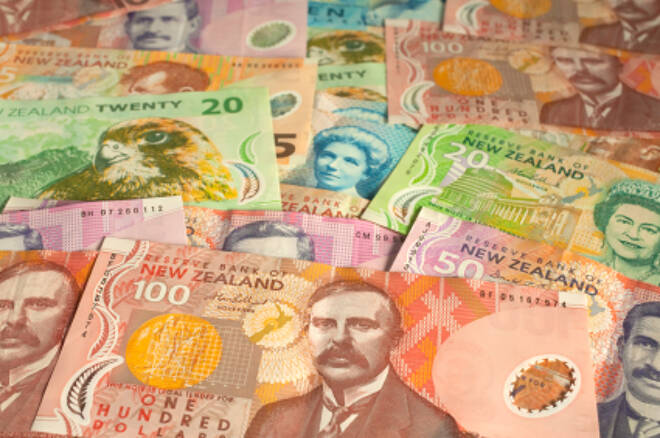Advertisement
Advertisement
Safe-Haven Buying Boosts Yen; Kiwi Underpinned by Central Bank Comments
By:
The U.S. Dollar weakened against the Japanese Yen and Australian and New Zealand Dollars after President Donald Trump ordered U.S. companies to start looking for an alternative to China. RBA Monetary Policy Minutes showed policymakers were willing to “wait and see” how the economy does after a pair of rate cuts in July and August. RBNZ Governor Adrian Orr said he was “pleased” with where interest rates were.
The Asia Pacific currencies posted mixed results last week with the Japanese Yen supported by renewed safe-haven buying and the Australian and New Zealand Dollars led lower by lingering domestic issues. The moves were a little deceiving, however. The Japanese Yen spent most of the week lower, but turned around on Friday when safe-haven demand increased in reaction to a steep sell-off in U.S. equity markets. A plunge in U.S. Treasury yields helped boost the Aussie and Kiwi on Friday, reducing some of their earlier losses in the week.
Looking ahead, escalating tensions between the United States and China will likely be supportive for the Japanese Yen, while keeping a lid on the Australian and New Zealand Dollars.
U.S. Dollar Impact
The U.S. Dollar weakened against the Japanese Yen and Australian and New Zealand Dollars after President Donald Trump ordered U.S. companies to start looking for an alternative to China. The move took place in response to Beijing imposing more tariffs on American goods, further escalating tensions between the two economic powerhouses in a prolonged trade dispute. Also contributing to the greenback’s weakness was a dovish speech by Federal Reserve Chairman Jerome Powell.
President Trump triggered a steep break in the U.S. Dollar when he tweeted, “Our great American companies are hereby ordered to immediately start looking for an alternative to China, including bringing your companies HOME and making your products in the USA.”
Although the biggest reaction against the Yen, Aussie and Kiwi was to Trump’s tweet, remarks from Federal Reserve Chairman Jerome Powell did put some pressure on the dollar due to their dovish nature.
Powell did not announce a major stimulus measure to ease concerns over a slowdown in global economic growth, but did prepare investors for further interest rate cuts. Powell acknowledged the U.S. economy was in a “favorable place” and the Fed would “act as appropriate” to keep the current economic expansion on track.
Japanese Yen
Last week’s rally by the Japanese Yen was fueled by safe-haven buying. The catalysts were a steep plunge in U.S. equity markets and a drop in U.S. Treasury yields. For the first four days of the week, the currency was pressured by limited economic data, a more positive outlook for the U.S. economy and the possibility of hawkish comments from Fed Chair Powell.
The USD/JPY finished the week at 105.420, down 0.903 or -0.85%.
Domestically, Japan’s Trade Balance was -0.13 Trillion versus -0.15 Trillion. Flash Manufacturing PMI remained in contraction territory at 49.5, below the 49.8 forecast. All Industries Activity was -0.8% worse than the -0.7% estimate. The previous month was revised higher to 0.5%.
Australian Dollar
The Aussie received a boost early in the week when the Reserve Bank of Australia (RBA) Monetary Policy Minutes showed policymakers were willing to “wait and see” how the economy does after a pair of rate cuts in June and July. This helped reduce the chances of a September rate cut.
The AUD/USD settled at .6756, down 0.0027 or -0.40%.
New Zealand Dollar
The New Zealand Dollar drifted lower all week until Friday. The selling pressure was enough to take out the August 7 bottom that was reached after the Reserve Bank of New Zealand (RBNZ) shocked the markets with an unexpected 50-basis point rate cut.
The kiwi jumped from a three-and-a-half-year low after RBNZ Governor Adrian Orr said he was “pleased” with where interest rates were, dampening expectations of another rate cut in September.
The NZD/USD settled at .6396, down 0.0029 or -0.45%.
About the Author
James Hyerczykauthor
James Hyerczyk is a U.S. based seasoned technical analyst and educator with over 40 years of experience in market analysis and trading, specializing in chart patterns and price movement. He is the author of two books on technical analysis and has a background in both futures and stock markets.
Advertisement
